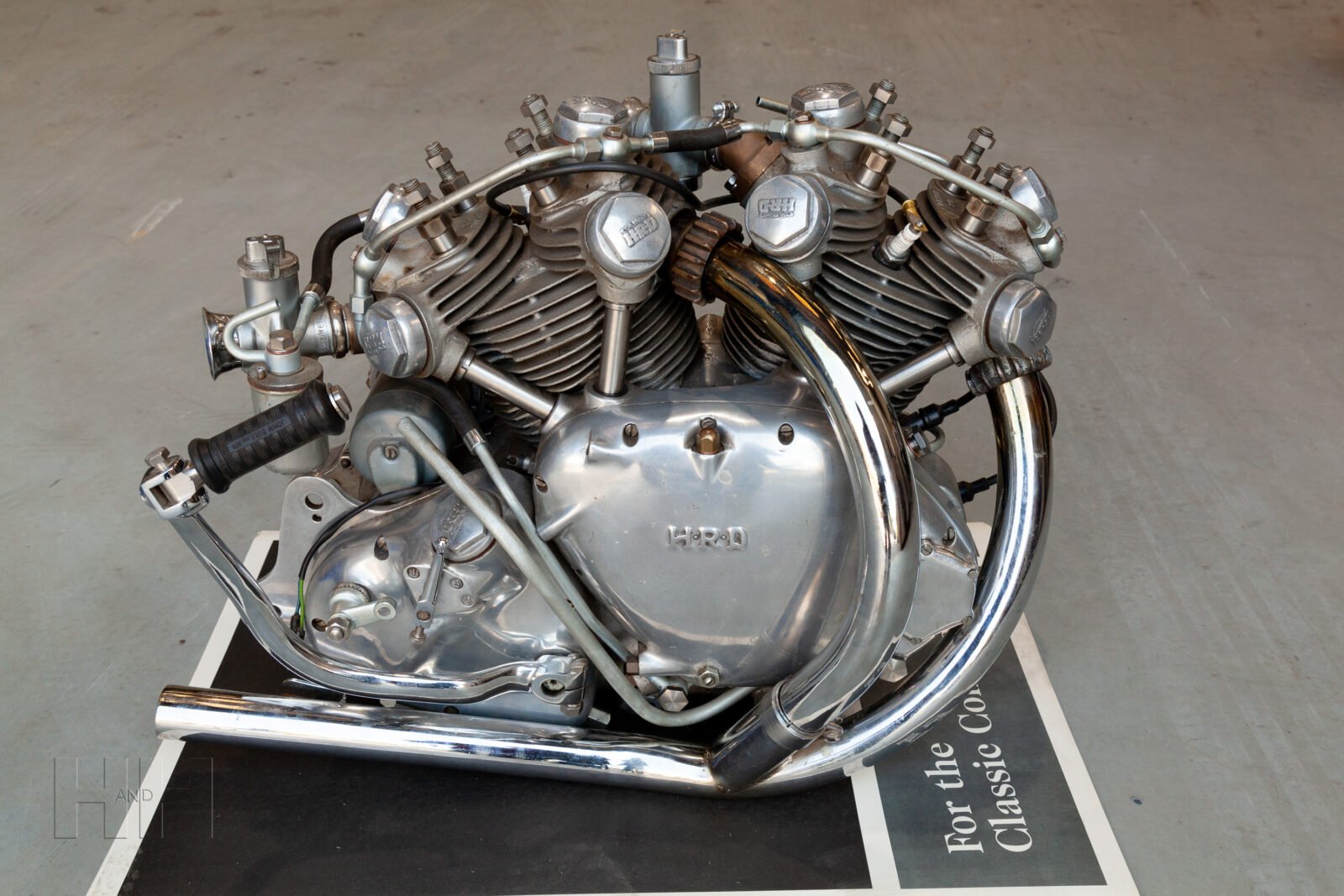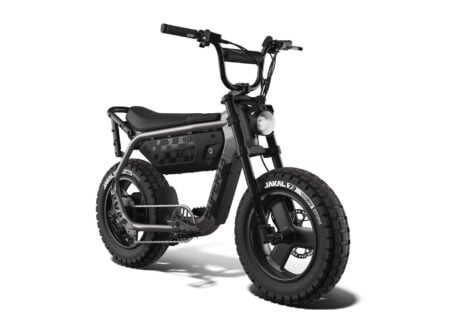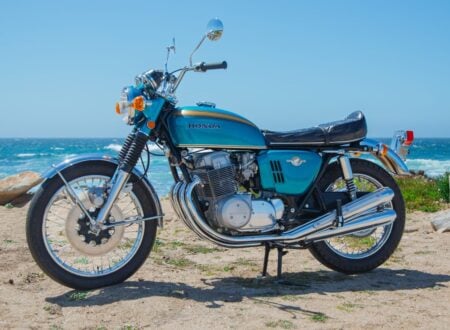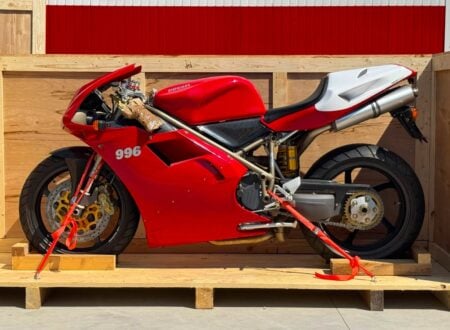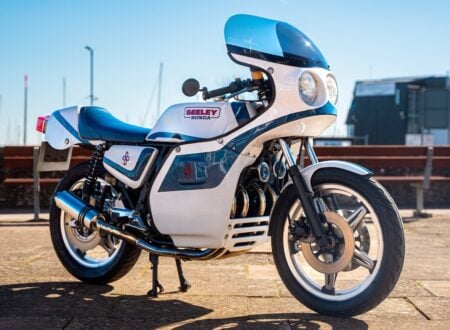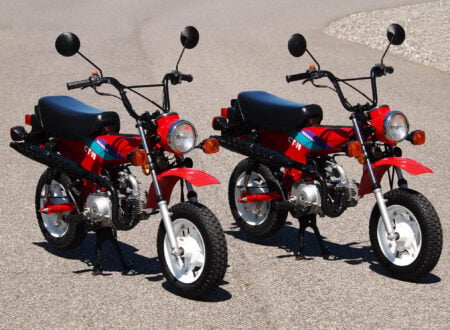The V-twin engine designed for the Vincent Rapide and later used in modified form for the Vincent Black Shadow and Black Lightning is unquestionably one of the most important motorcycle engine designs of the 20th century.
The engine was famously developed by Australian engineer Phil Irving after inspiration struck when we saw two blueprints for single cylinder engines overlapping in a “V” configuration on his drafting table.
Years later Irving would redesign the 215 cubic inch Buick V8215 cubic inch Buick V8 into a World Championship winning Formula 1 engine, installed in the back of the Brabham BT19 driven by fellow Aussie Jack Brabham in 1966.
Fast Facts – The Vincent Rapide
- The Vincent Rapide V-twin was developed in the mid-1930s using the cylinders and heads of the 499cc Vincent Comet grafted onto a modified crankcase, to give a new swept capacity of 998cc.
- Variations on the Rapide engine would be used to power the Black Shadow and the Black Lightning, the fastest production motorcycles in the world at the time of their release and now among the most valuable motorcycles in the world.
- The engine is a 47º V-twin with two camshafts mounted high in the block that actuate two valves per cylinder via short push rods. Post-WWII versions of the engine made use of unit construction.
The Vincent Rapide
When the Vincent Rapide was first shown to the motoring world at the 1936 Olympia Motorcycle Show, it shocked attendees with its 45 hp one liter engine that could propel the bike to a top speed of over 110 mph, an astonishing speed for the era.
Production ran from 1936 until it was stopped in 1939 due to the outbreak of World War II. During the war blueprints were completed for an updated Rapide with unit construction and a largely new design, still with the same 998cc capacity and fundamental architecture as the old Rapide but with less unnecessary complexity.
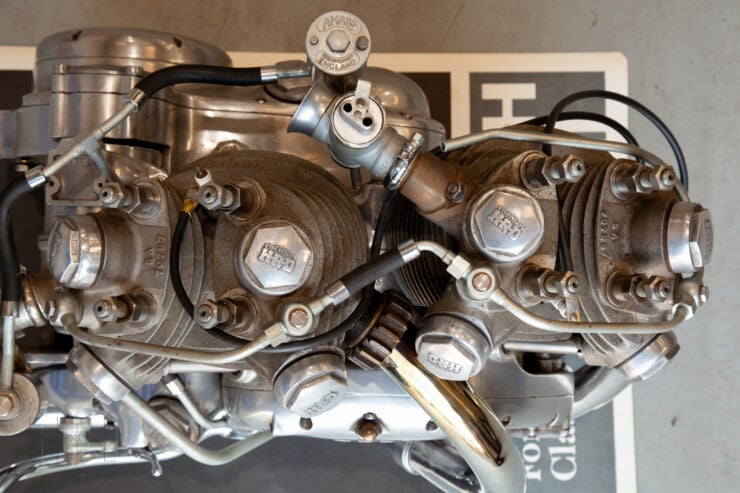

This would be the engine that would form the foundation of the Vincent Black Shadow and Black Lightning to come. The Rapide was offered over four primary generations, the pre-WWII Rapide Series A, and the post-WWII Series B, Series C, and Series D.
The total production run for the Rapide would continue from 1936 until 1955 with a break for the war in the middle, and surviving examples of these bikes are now among the most collectible vintage motorcycles in the world.
The Vincent Rapide Series B Engine Shown Here
The Series B Rapide engine you see here is a 1949 model that benefits from those significant post-WWII updates. The engine was originally fitted to a Rapide that was delivered to an owner who collected it from Kings of Oxford in June 1949.
The history of the engine between then and now is a bit of a mystery. It somehow lost its motorcycle but remains otherwise complete. This engine is part of a deceased estate, but by looking at the engine it’s possible to determine that it still has its carburetors, magneto, dynamo, kickstart lever, and even exhaust headers.
It’s likely that this engine will be bought by someone looking to build and Egil-Vincent or perhaps a Norvin, what we do know is that it has an estimate hammer price of £9,000 – £11,000 and it’s due to roll across the auction block with H&H Auctions on the 27th of October at the National Motorcycle Museum in England.
If you’d like to read more about this engine or register to bid you can click here to visit the listing.
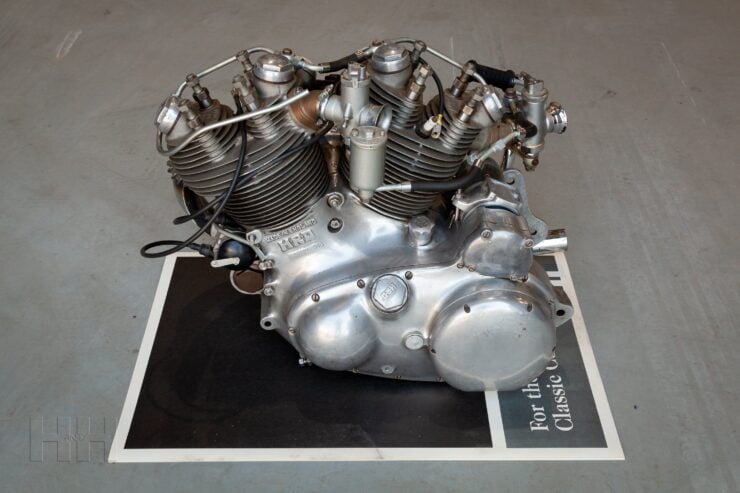
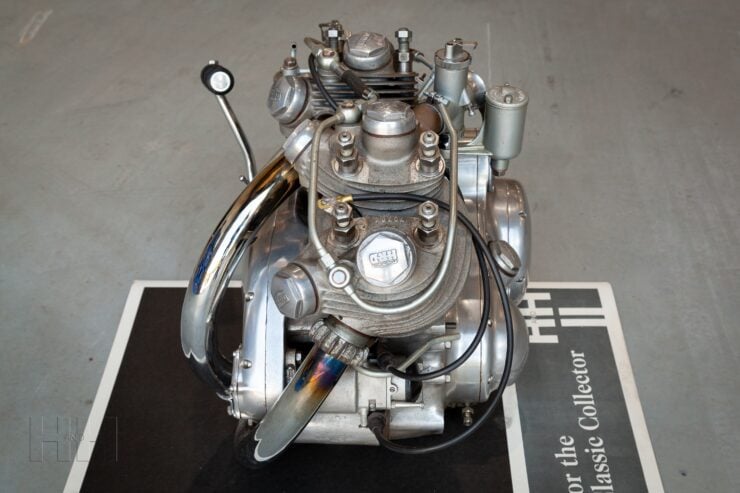
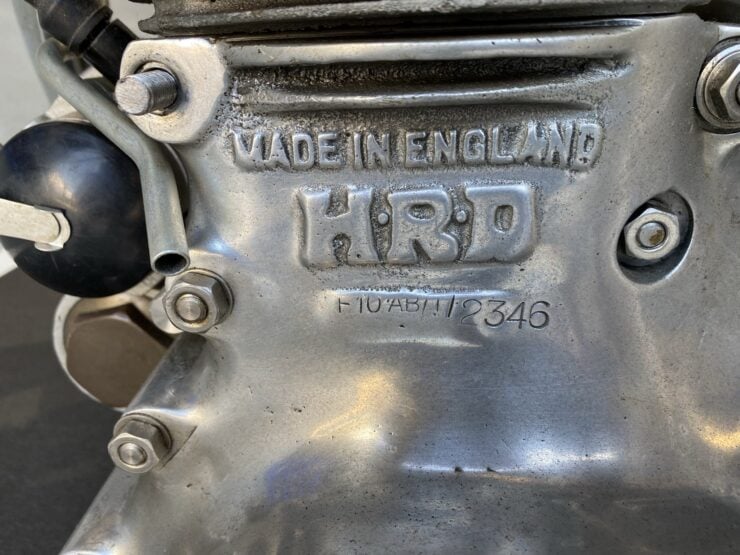

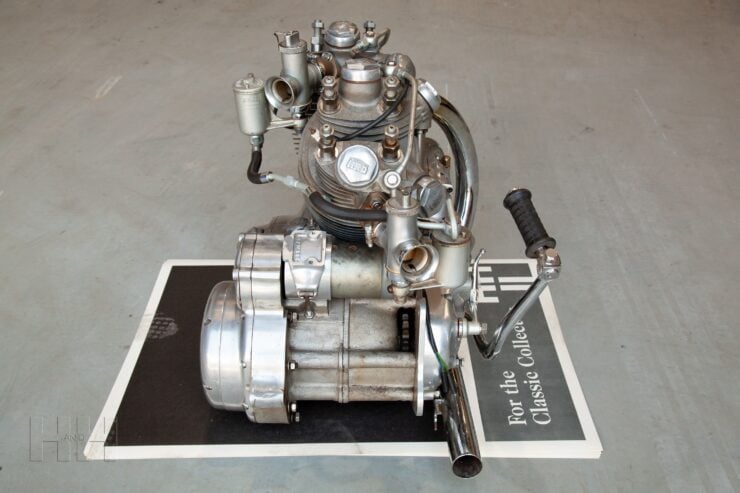
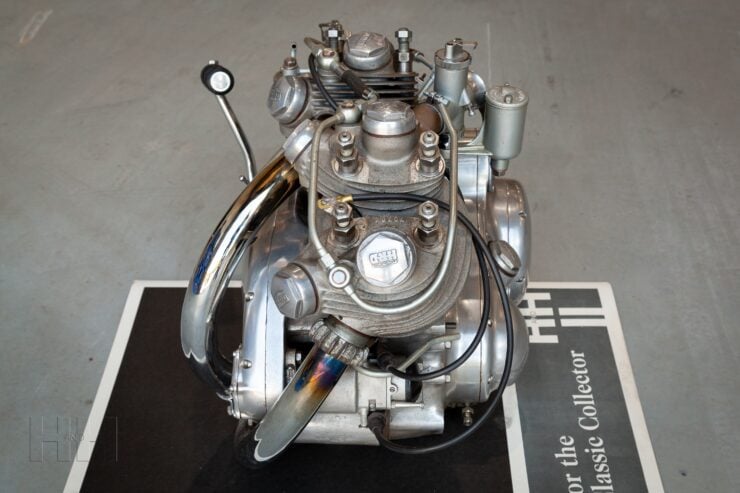
Images courtesy of H&H Auctions

